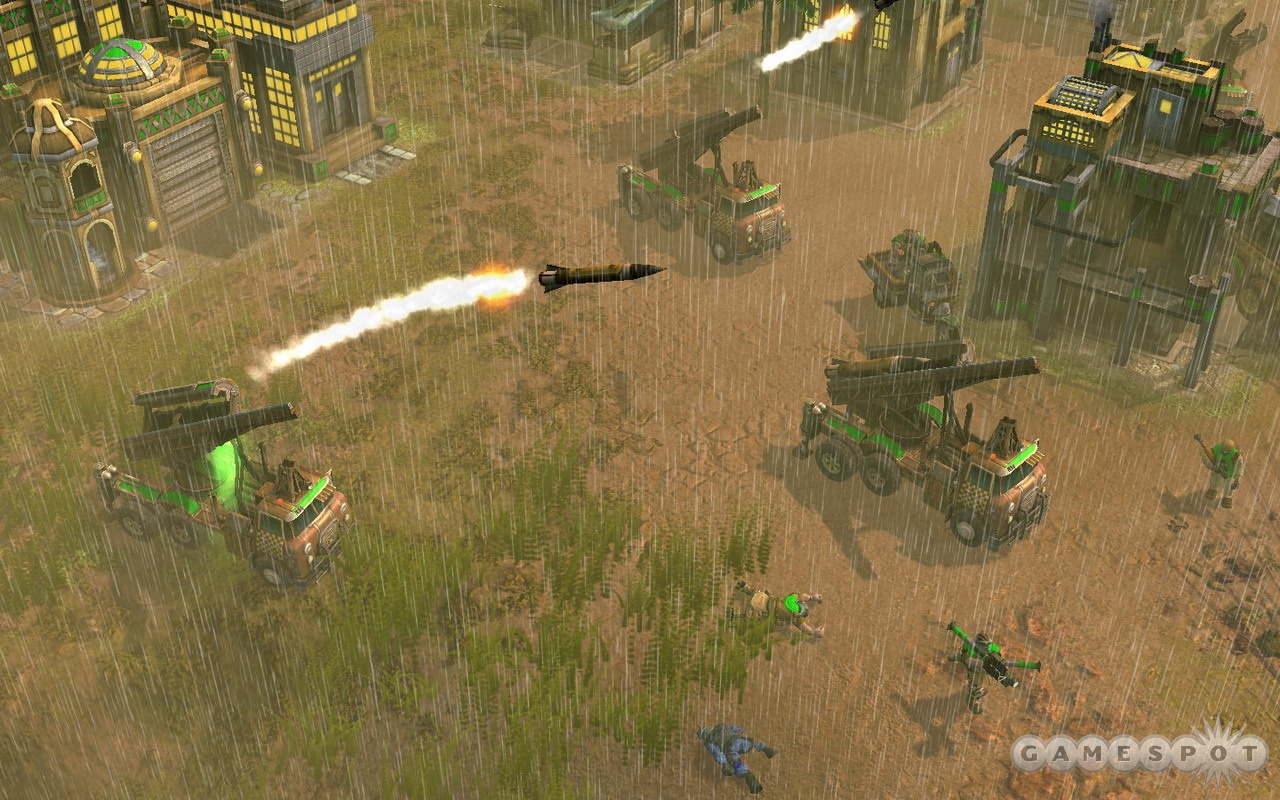Empire Earth III Faction Preview - The Middle Eastern Region
Learn the strengths and weaknesses of the Middle Eastern region in this epic real-time strategy game.
Like its predecessors, Empire Earth III is a game about history. This is a real-time strategy game that stretches from the Stone Age all the way to a science-fiction future where giant robotic war machines and genetically engineered creatures do battle. As the leader of a historical faction, you make the decisions about what structures and military units to build. You also decide on which technologies to research and how to conduct war against your neighbors. The historical factions in the game will be based on one of three geographical regions, each of which is unique from both a visual and gameplay perspective. We're taking a look at each of these regions, starting with the Middle Eastern region. Empire Earth will ship next month.
The Middle Eastern Region
The deserts of the Middle East have done much to dictate the kind of warfare that has evolved there. When you live in a place of constantly shifting sands, it's important to be able to move and adapt quickly. The Middle Eastern region reflects this because it is built around the hit-and-run tactics favored by the nomadic tribes, such as the Bedouins. Early Middle Eastern light cavalry is mounted on camels, not horses, while in the later eras of the game, tracked and treaded vehicles replace mounted steeds. For instance, there are mobile Scud missile launchers that can pound enemies from a distance. Middle Eastern units are built for speed, which allows them to conduct surprise attacks when the enemy least suspects.
To aid in their attack, Middle Eastern units specialize in raiding and disruptive abilities that can knock an enemy off balance. There are also specialized units that are effective in sneak attacks and sowing confusion in enemy ranks. The downside is that this mobility comes at a price of sheer firepower; thus, Middle Eastern units tend to be underpowered compared to Asian or Western units, particularly in terms of tanks and field weapons.

However, it's not just the military units of the Middle Eastern region that are mobile. Most of the faction's buildings can also pack up and move at a moment's notice. Imagine the tactical possibilities. If an enemy is pressing on a Middle Eastern base, then that base can relocate to a safer position. Or if the Middle Eastern faction is on the offensive, the production facilities that churn out fresh units can be moved forward, allowing quicker delivery of reinforcements. Another viable tactic is to build facilities inside enemy territory. That is because the Middle Eastern region doesn't have to worry about territory ownership. Placing a barracks or factory deep inside enemy lines would allow you to produce units to attack the enemy's production facilities and economy.
All this mobility can be a challenge to use effectively, though. With the other factions, once you place down a building, you don't have to worry about moving it for the rest of the game, whereas you might be constantly thinking of moving your structures around if you're playing as the Middle Eastern region. Another challenge comes from the fact that the faction lacks any kind of dedicated defensive structures, such as walls and towers. This can make you extremely vulnerable if the enemy comes knocking.
The factions derived from the Middle Eastern region will require careful guidance, but their capabilities will reward skilled use. But if you like to play offensively or aggressively, the Middle Eastern region is geared toward that style of play.
Got a news tip or want to contact us directly? Email news@gamespot.com
Join the conversation